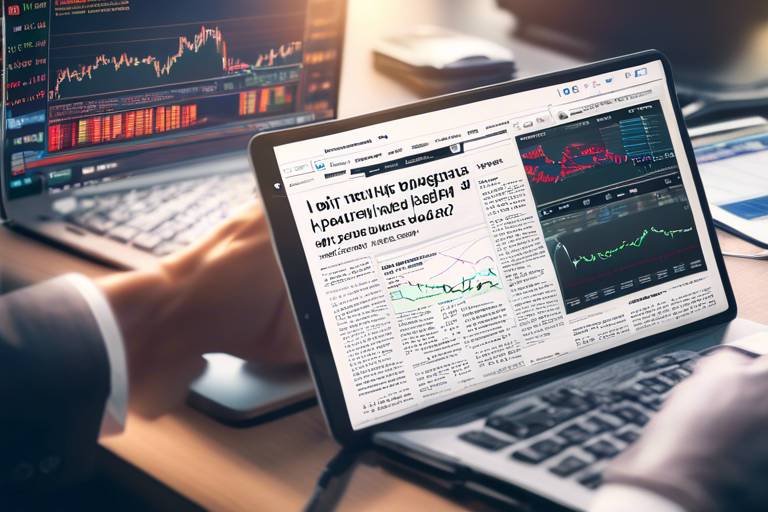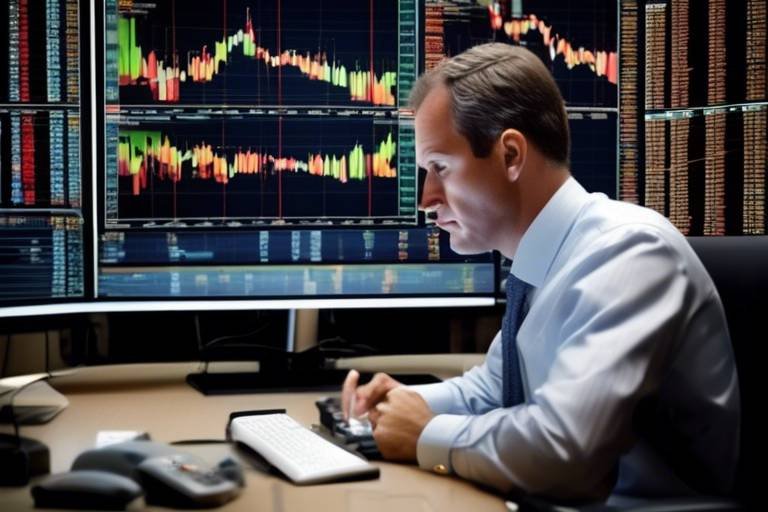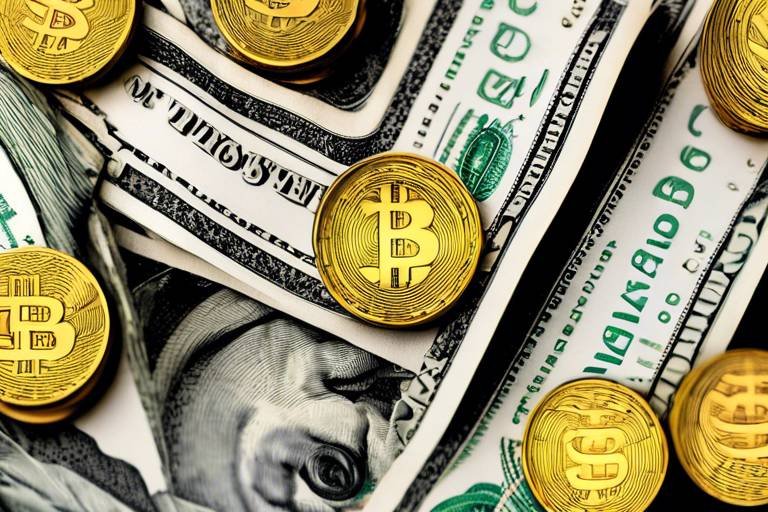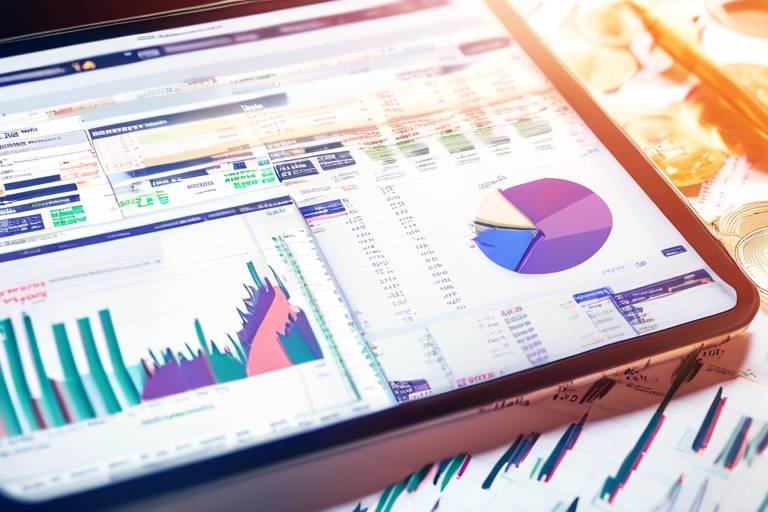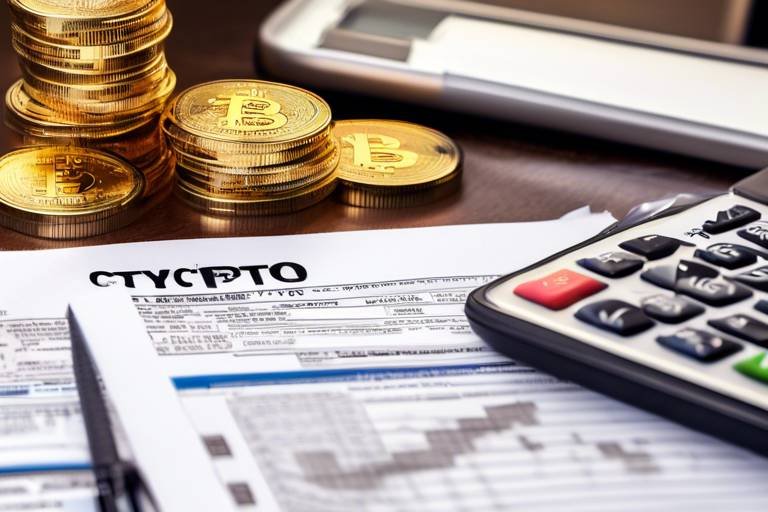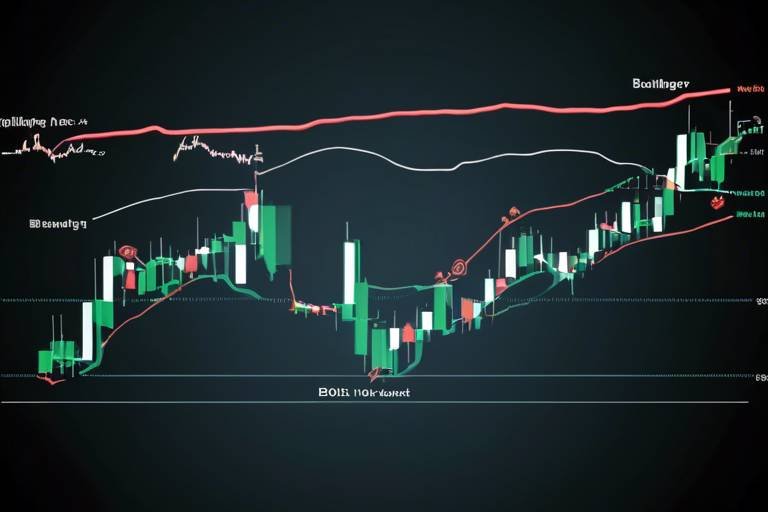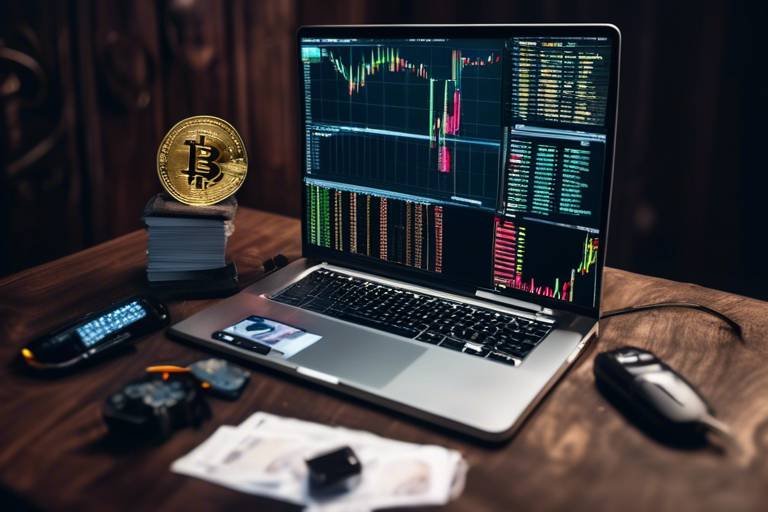The Best Times to Trade Cryptocurrency
Trading cryptocurrency can feel like navigating a roller coaster, with its thrilling ups and downs. But have you ever wondered when the best times to hop on this ride are? This article explores the optimal times for trading cryptocurrency, including market trends, trading strategies, and insights on when to maximize profits. Understanding these factors can be the difference between riding the wave of success and getting caught in a downturn.
Analyzing market trends is essential for successful trading. Think of market trends as the weather forecast for your trading strategy; they can help you decide whether to bring an umbrella or sunscreen. In cryptocurrency, trends can be categorized as bullish (when prices are rising) or bearish (when prices are falling). Recognizing these trends early can provide you with a significant edge in the market. For example, if you notice a bullish trend, it might be the perfect time to buy, while a bearish trend could signal a good time to sell or wait it out. But how do you identify these trends? Look for patterns in price movements, trading volume, and market sentiment. Tools like moving averages and RSI (Relative Strength Index) can help you gauge the market's mood and make informed decisions.
Did you know that there are specific hours when trading activity peaks? Understanding these peak trading hours can significantly affect your trading strategy. During these times, trading volume is at its highest, which often leads to increased price volatility and potential profit opportunities. Generally, the cryptocurrency market is most active during the overlap of major global markets. For instance, the hours between 8 AM and 12 PM UTC typically see a surge in trading activity. This is when traders from Asia, Europe, and North America are all active, creating a perfect storm for price movement. It's like a bustling marketplace where everyone is eager to make a deal!
Global market overlaps create unique trading opportunities. Imagine a busy intersection where cars from different directions converge; that's what trading overlaps are like. During these times, liquidity increases, making it easier to enter and exit positions without drastically affecting the price. The most notable overlaps occur between the Asian and European markets, and then again between the European and North American markets. These overlaps can lead to significant price swings, making them ideal for traders looking to capitalize on rapid changes.
The Asian market significantly influences cryptocurrency prices. With countries like Japan and South Korea leading the charge in crypto adoption, their trading patterns can set the tone for the rest of the day. Asian traders often react quickly to news and trends, which can cause sudden price movements. For example, a positive regulatory announcement in Japan can lead to a surge in prices, while negative news can have the opposite effect. By paying attention to Asian market hours, traders can position themselves advantageously before the rest of the world wakes up.
The European market also plays a crucial role in the cryptocurrency landscape. As one of the largest markets for digital assets, European traders often have a significant impact on price movements. The hours between 8 AM and 4 PM UTC are particularly influential, as many traders are actively buying and selling during this time. European trading hours can often see heightened volatility, especially around major economic announcements or regulatory news. Keeping an eye on this market can provide valuable insights into potential price shifts.
Weekend trading can differ from weekdays, presenting both opportunities and challenges. While many traders take a break, the cryptocurrency market never sleeps. This can lead to lower trading volumes and less liquidity, which may result in more significant price fluctuations. On the flip side, weekends can also provide unique trading opportunities, especially if there are major news events or developments. If you're considering trading on weekends, it's essential to stay informed about potential market-moving news and be prepared for unexpected price swings.
News events can dramatically impact cryptocurrency prices. Have you ever seen a coin's value skyrocket or plummet overnight? Often, this is due to major announcements or news events. Timing your trades around these events can be crucial for maximizing profits. Traders often look for key indicators, such as upcoming regulatory announcements or technological advancements, that could affect market sentiment. Understanding the timing of these events can help you make informed decisions about when to enter or exit trades.
Economic indicators often influence market sentiment. These indicators can range from employment rates to inflation figures, and they can provide insights into the overall health of the economy. For traders, keeping an eye on these indicators can help identify optimal trading times. For example, a strong jobs report may boost investor confidence, leading to increased trading activity. Conversely, poor economic data can create uncertainty, prompting traders to be more cautious. By monitoring these indicators, you can better anticipate market movements and adjust your trading strategy accordingly.
Regulatory developments can create volatility. As governments around the world grapple with how to regulate cryptocurrencies, news regarding regulations can lead to significant price fluctuations. Staying informed about regulatory changes can help you time your trades effectively. For instance, if a country announces favorable regulations for cryptocurrency trading, prices may surge. Conversely, negative news can lead to sharp declines. By keeping your finger on the pulse of regulatory news, you can navigate these turbulent waters more effectively.
Seasonal trends can affect trading behavior. Just like the changing seasons influence our daily lives, they can also impact the cryptocurrency market. Historical patterns show that certain times of the year may see increased trading activity or price movements. For example, the end of the year often brings increased buying as traders aim to capitalize on year-end rallies. Understanding these seasonal trends can help inform your trading decisions throughout the year, allowing you to take advantage of potential opportunities.
- What are the best times to trade cryptocurrency? The best times are typically during peak trading hours, especially during global market overlaps.
- How do news events affect cryptocurrency prices? Major news events can lead to rapid price changes, making it crucial to time your trades around them.
- Is weekend trading advisable? Weekend trading can be risky due to lower volumes but can also present unique opportunities.
- How can I stay informed about regulatory news? Following reputable news sources and market analysts can help you stay updated on regulatory changes.

When it comes to trading cryptocurrency, understanding market trends is like having a map in a foreign land. It guides you through the chaotic world of digital currencies, helping you identify the right moments to buy or sell. Market trends can generally be categorized into two types: bullish and bearish. A bullish trend indicates that prices are rising, while a bearish trend signals that prices are falling. Recognizing these trends is crucial for developing effective trading strategies and maximizing profits.
To identify whether the market is in a bullish or bearish phase, traders often look at various indicators. These can include price action, moving averages, and trading volume. For example, if you see a series of higher highs and higher lows on a price chart, it’s a strong indication of a bullish trend. On the other hand, if the price is making lower highs and lower lows, you might be looking at a bearish trend. It’s like watching a game of tug-of-war; the direction the rope moves can give you clues about which team is gaining the upper hand.
Moreover, understanding market sentiment is vital. Traders often use tools such as the Fear and Greed Index to gauge how investors are feeling about the market. When fear dominates, prices tend to drop, and when greed takes over, prices usually rise. This sentiment analysis can be your secret weapon, allowing you to enter or exit trades at the most opportune moments.
Another critical aspect of understanding market trends is recognizing the impact of external factors. Economic events, regulatory changes, and even social media trends can influence market behavior dramatically. For instance, a tweet from a prominent figure can send prices soaring or plummeting in mere minutes. Thus, staying updated on the latest news and trends is essential for any trader looking to navigate the volatile waters of cryptocurrency.
In summary, understanding market trends is not just about looking at numbers. It’s about interpreting the story those numbers tell. By honing your ability to identify bullish and bearish trends, analyzing market sentiment, and staying informed about external influences, you can significantly enhance your trading strategies and improve your chances of success. So, the next time you sit down to trade, remember: the trend is your friend, but only if you know how to read it!
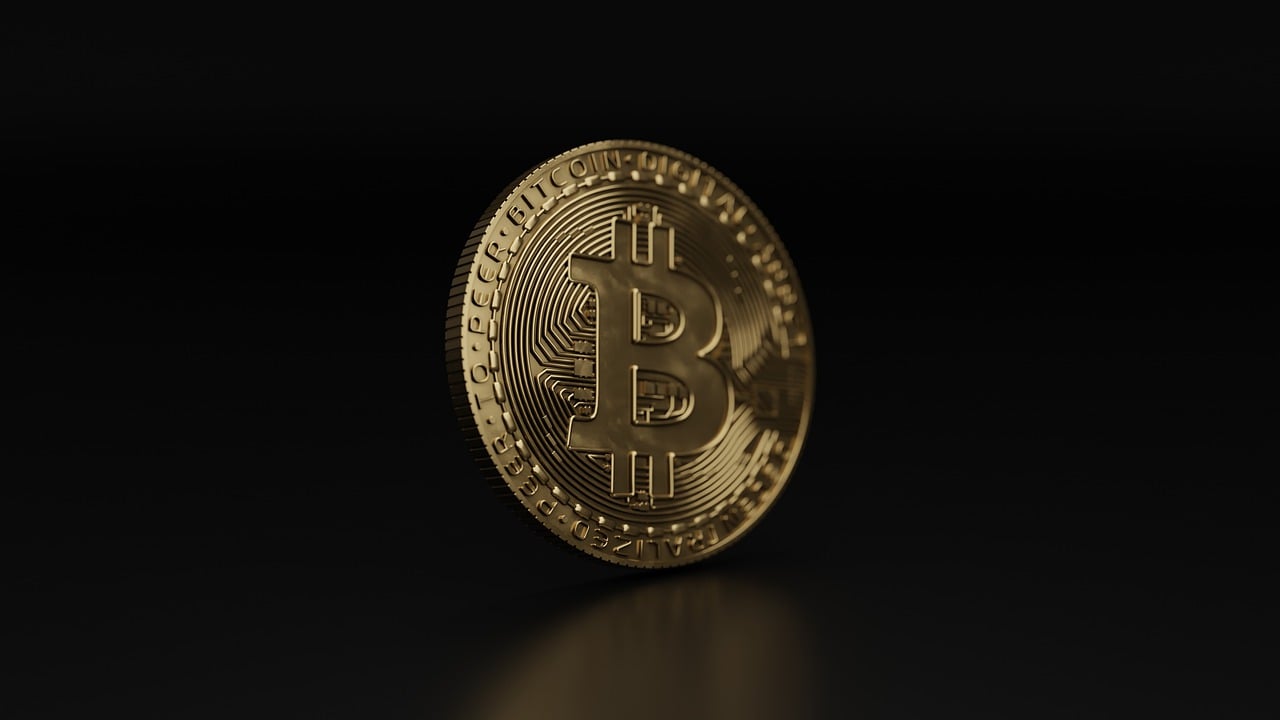
[Peak Trading Hours]
When it comes to trading cryptocurrency, timing is everything. Just like a surfer waiting for the perfect wave, traders need to be aware of the peak trading hours to catch the best opportunities. During these hours, market activity is at its highest, which can lead to increased price volatility and, ultimately, higher profits. But how do you determine when these peak hours are? Well, it largely depends on global trading patterns and the overlap of different markets.
One of the most critical aspects to consider is the trading volume. When more traders are active, prices can fluctuate more dramatically, creating opportunities for savvy traders. You might be wondering, "What are the actual hours that I should be focusing on?" Generally, the best times to trade are during the overlap of major markets, such as the Asian, European, and North American markets. Each of these markets has its own peak hours, and when they coincide, the trading volume can skyrocket.
To give you a clearer picture, here’s a simple table showcasing the peak trading hours for each major market:
| Market | Peak Trading Hours (UTC) |
|---|---|
| Asian Market | 00:00 - 09:00 |
| European Market | 07:00 - 16:00 |
| North American Market | 13:00 - 22:00 |
As you can see, there’s a sweet spot between 07:00 and 09:00 UTC when the Asian market overlaps with the European market. This is often when you’ll see the most significant price movements. Think of it like a bustling city intersection—when all the cars come together, that’s when the real action happens. If you’re looking to maximize your profits, focusing on these peak hours can make a considerable difference.
However, it’s essential to remember that while peak trading hours can present fantastic opportunities, they can also come with increased risk. With higher volatility, the potential for loss is equally significant. Therefore, having a solid trading strategy in place is crucial. Use tools like stop-loss orders to protect your investments and ensure that you’re not caught off guard during those wild price swings.
Another factor to consider is the psychology of traders during these peak hours. Many traders are influenced by market sentiment, and when a large number of traders are active, their collective behavior can drive prices in one direction or another. This is why keeping an eye on social media trends and news can provide valuable insights into market movements.
In conclusion, understanding peak trading hours is not just about knowing when to trade; it’s about being strategic and informed. By aligning your trading activities with these high-activity periods, you can enhance your chances of success in the ever-evolving world of cryptocurrency.
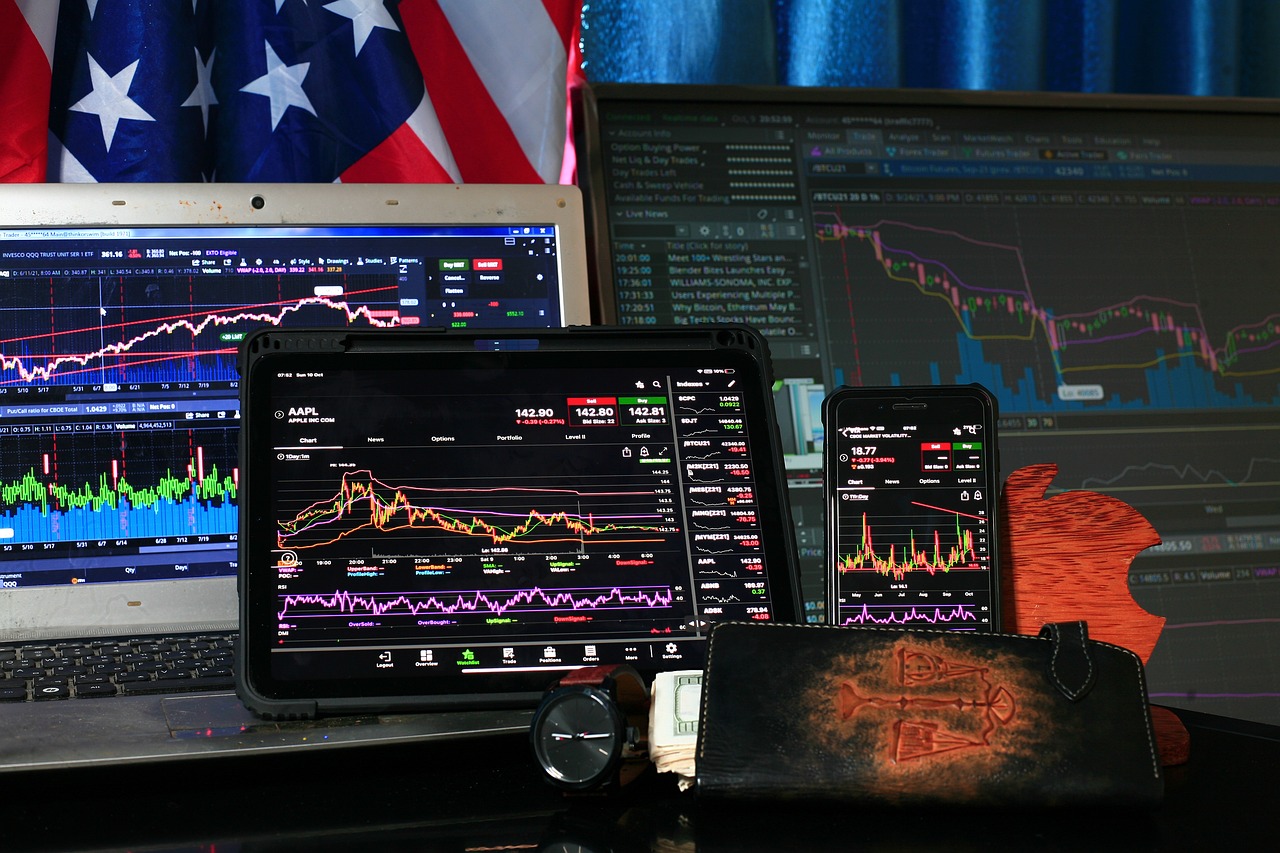
[Global Market Overlaps]
When it comes to trading cryptocurrency, understanding global market overlaps is crucial for maximizing your profits. Imagine a bustling marketplace where traders from different parts of the world converge, each bringing their own strategies and insights. These overlaps create a unique environment where liquidity is high, and price movements can be more pronounced. So, when do these overlaps occur, and how can you take advantage of them?
Typically, the most significant overlaps happen between major trading sessions, such as the Asian, European, and North American markets. For instance, the overlap between the Asian and European markets occurs from around 3 AM to 12 PM UTC. During this time, traders from both regions are active, leading to increased trading volume and potentially higher volatility in cryptocurrency prices. This is your golden hour if you're looking to capitalize on quick price movements!
To illustrate how these overlaps can create trading opportunities, consider the following table that outlines the trading hours of the major markets:
| Market | Trading Hours (UTC) |
|---|---|
| Asian Market | 12 AM - 9 AM |
| European Market | 7 AM - 4 PM |
| North American Market | 1 PM - 10 PM |
As you can see, the overlap between the Asian and European markets not only provides a prime opportunity for trading but also influences price direction. When traders from different regions interact, their collective actions can lead to sudden price spikes or drops, making it essential to stay alert during these hours.
But it’s not just about timing; understanding liquidity during these overlaps is equally important. Higher liquidity means that you can enter and exit trades more easily without significantly impacting the market price. This is particularly beneficial for those looking to execute large trades or those using scalping strategies. In contrast, trading during off-peak hours can lead to lower liquidity and increased slippage, which can eat into your profits.
Moreover, global market overlaps can also be influenced by external factors such as news events and economic indicators. For instance, if a significant economic announcement occurs during an overlap, it can amplify price movements, presenting both risks and opportunities for traders. Therefore, staying informed about upcoming news and events is crucial when planning your trading strategy around these overlaps.
In conclusion, understanding global market overlaps is more than just knowing when to trade; it’s about recognizing the dynamics at play and being prepared to seize opportunities as they arise. By aligning your trading activities with these critical times, you can enhance your trading performance and potentially increase your profitability.
- What are market overlaps? Market overlaps occur when two or more major financial markets are open simultaneously, leading to increased trading activity and liquidity.
- How can I take advantage of market overlaps? By trading during overlaps, you can benefit from higher volatility and liquidity, which can lead to better trading opportunities.
- What times are best for trading cryptocurrencies? The best times for trading cryptocurrencies are typically during market overlaps, especially between the Asian and European markets, as well as the European and North American markets.

[Asian Market Influence]
The Asian market plays a pivotal role in the cryptocurrency trading landscape, often acting as a bellwether for market trends. With countries like Japan, South Korea, and China at the forefront of digital currency adoption, the trading patterns in these regions can significantly influence global prices. For instance, when major Asian exchanges open, trading volumes can surge, leading to increased volatility and potential profit opportunities for savvy traders.
One of the most fascinating aspects of the Asian market is its unique trading hours. Unlike traditional stock markets that operate on a fixed schedule, cryptocurrency trading is 24/7. However, the peak activity often occurs during the overlap of Asian trading hours, particularly when the Tokyo and Seoul markets are active. This is when traders are most likely to react to news, making it a prime time for those looking to capitalize on market movements.
Moreover, the cultural attitudes toward investment in Asia can also affect trading behaviors. For example, in countries like Japan, there is a strong interest in technology and innovation, which translates into a higher acceptance of cryptocurrencies. This cultural inclination can lead to spikes in trading volume when new coins are launched or when significant technological advancements are announced.
To better understand the influence of the Asian market, consider the following table that outlines key trading hours and their corresponding impacts on the market:
| Region | Trading Hours (UTC) | Market Influence |
|---|---|---|
| Tokyo | 00:00 - 09:00 | High trading volume, often leads to price movements |
| Seoul | 00:00 - 09:00 | Strong influence on altcoin trends and innovations |
| Hong Kong | 01:00 - 09:00 | Increased liquidity, especially for major cryptocurrencies |
In summary, understanding the Asian market's influence is crucial for any trader looking to maximize their profits. By keeping an eye on trading hours and regional trends, traders can position themselves to take advantage of the unique opportunities that arise during these times. Are you ready to dive into the dynamic world of Asian cryptocurrency trading?
- What are the peak trading hours for the Asian market? The peak trading hours generally occur between 00:00 - 09:00 UTC when major exchanges in Tokyo, Seoul, and Hong Kong are active.
- How does the Asian market influence global cryptocurrency prices? The Asian market often leads to increased trading volumes and volatility, which can significantly impact prices globally.
- Why is it important to monitor Asian trading patterns? Monitoring these patterns allows traders to capitalize on market movements and make informed trading decisions based on regional trends.
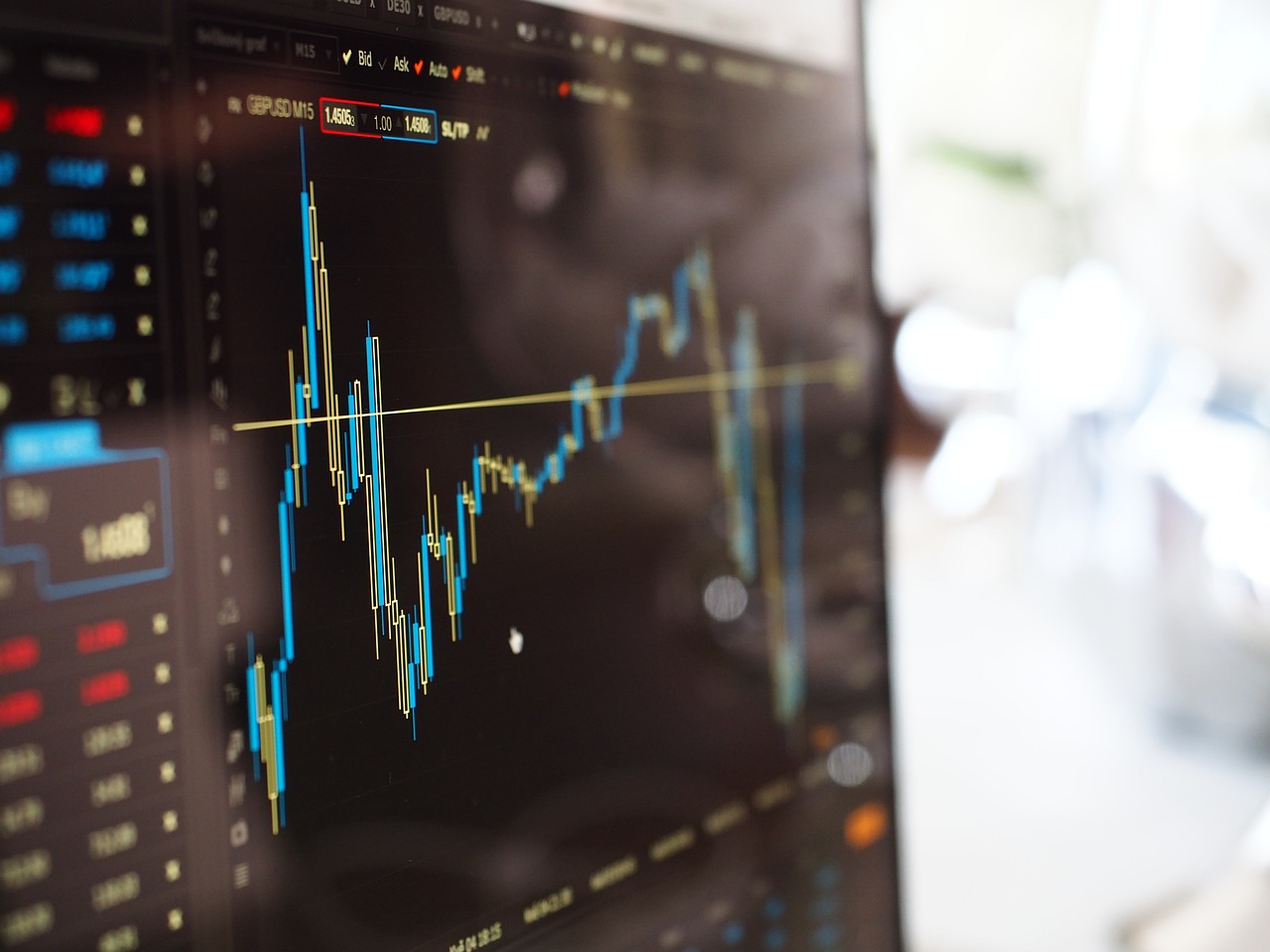
[European Market Impact]
The European market holds a pivotal role in the global cryptocurrency trading landscape. As one of the largest financial hubs in the world, Europe influences price movements and trading volumes significantly. When European traders are active, the market experiences heightened liquidity and volatility, creating opportunities for both seasoned and novice traders alike. But what does this mean for you? Let's dive deeper.
During the European trading hours, which typically run from 8 AM to 4 PM GMT, the overlap with the Asian market generates a unique environment. This is when traders from both regions are actively buying and selling, leading to increased trading volumes. The surge in activity can cause rapid price fluctuations, making it an ideal time for traders looking to capitalize on short-term movements. If you’re wondering when to make your move, this overlap is your golden hour.
Moreover, the European market is home to many influential financial institutions and traders who often react to global news and economic indicators. For instance, announcements regarding interest rates, inflation, and unemployment rates from major economies like Germany and France can significantly impact cryptocurrency prices. Understanding these economic indicators can help you anticipate market trends and adjust your trading strategy accordingly.
To illustrate the impact of the European market on cryptocurrency trading, consider the following table that outlines key trading hours and their corresponding effects:
| Trading Session | Time (GMT) | Market Activity | Potential Impact |
|---|---|---|---|
| Asian Market | 12 AM - 8 AM | Moderate | Initial price movements |
| European Market | 8 AM - 4 PM | High | Increased liquidity and volatility |
| U.S. Market | 1 PM - 9 PM | High | Further price fluctuations |
It's also crucial to note that the European market can react differently on various days of the week. For instance, trading on Mondays may see lower volumes as traders assess the weekend's developments, while Fridays often bring heightened activity as traders finalize positions before the weekend. This cyclical nature means that timing your trades around these days can lead to better outcomes.
In conclusion, the European market's influence on cryptocurrency trading cannot be overstated. By understanding the trading hours, the impact of economic news, and the behaviors of European traders, you can position yourself to take advantage of the opportunities this vibrant market presents. So, the next time you're planning your trading strategy, remember to keep an eye on the European market's pulse—it might just lead you to your next profitable trade!
Q: What are the best times to trade cryptocurrency?
A: The best times to trade are typically during market overlaps, especially between the European and Asian markets, when trading volumes are high.
Q: How does European news affect cryptocurrency prices?
A: Major economic announcements from European countries can lead to significant price movements, so it's essential to stay updated on these events.
Q: Is weekend trading advisable?
A: Weekend trading can offer unique opportunities, but it often comes with lower trading volumes and higher volatility, so caution is advised.
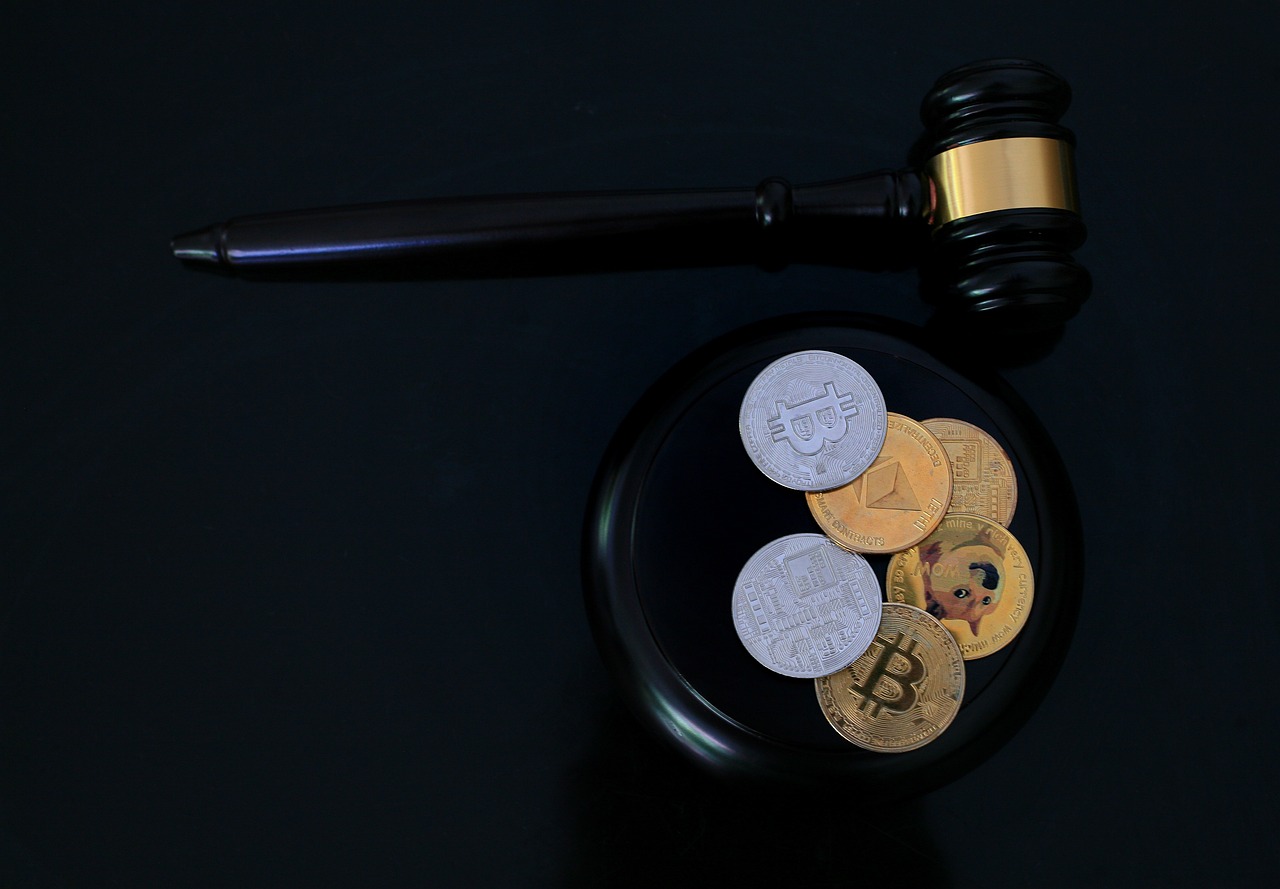
[Weekend Trading Dynamics]
When it comes to trading cryptocurrency, weekends can feel like a double-edged sword. On one hand, you might find yourself in a quieter market, with fewer traders around. On the other hand, this tranquility can lead to some fascinating price movements. Have you ever thought about how the weekend changes the trading landscape? It’s like a quiet town on a Sunday morning—calm, yet full of potential surprises.
One of the most significant aspects of weekend trading is the reduced trading volume. During the weekdays, especially during peak hours, the market is bustling with activity. However, as Friday evening rolls around, many traders step back, and the market can become less liquid. This lack of liquidity can create opportunities for savvy traders who are willing to dive in when others are hesitant. Imagine walking into a store just before closing time—there might be fewer shoppers, but you could snag a fantastic deal!
But what does this mean for your trading strategy? Here are a few dynamics to consider:
- Price Volatility: With fewer traders, prices can swing wildly on the weekend. This volatility can lead to significant profit opportunities, but it also comes with increased risk. It’s essential to stay alert and be ready to react quickly.
- Market Sentiment: The mood of the market can change dramatically over the weekend. Traders might react to news or events that occurred during the week, leading to unexpected price movements. Keeping an eye on social media and news outlets can help you gauge the market sentiment.
- Long-Term vs. Short-Term Trading: If you’re a long-term investor, weekend trading might not be as critical for you. However, if you’re a day trader or looking to capitalize on short-term gains, weekends could present unique opportunities.
Moreover, the global nature of cryptocurrency trading means that while it may be the weekend in one part of the world, another region could be waking up to a bustling market. For instance, while U.S. traders might be enjoying their Saturday, traders in Asia could be making moves that influence the market. This interconnectedness can create ripple effects that savvy traders can exploit.
However, weekend trading isn’t without its challenges. The lack of institutional trading on weekends can lead to less reliable price movements. Institutional traders often have more capital and can stabilize the market, but when they’re absent, prices might react more dramatically to smaller trades. This is something to keep in mind if you’re considering entering the market during the weekend.
In conclusion, weekend trading dynamics offer a unique blend of opportunities and risks. By understanding the market’s behavior during these quieter days, you can position yourself to take advantage of potential price swings. Just remember, like any good adventure, it’s essential to be prepared and stay informed. So, are you ready to dive into the weekend trading waters?
1. Is it safe to trade cryptocurrencies on weekends?
While weekend trading can offer unique opportunities, it also comes with increased volatility and risk. Make sure to do your research and manage your risk appropriately.
2. How does the trading volume differ on weekends compared to weekdays?
Typically, trading volume is lower on weekends, which can lead to more significant price swings. This lack of liquidity can create both opportunities and risks for traders.
3. What should I watch out for when trading on weekends?
Keep an eye on market sentiment, news events, and any potential regulatory updates that could impact prices. Being informed can help you make better trading decisions.
4. Are there specific strategies for weekend trading?
Yes, many traders employ strategies that focus on short-term gains during weekends. This can include setting tighter stop-loss orders and being prepared for rapid price movements.
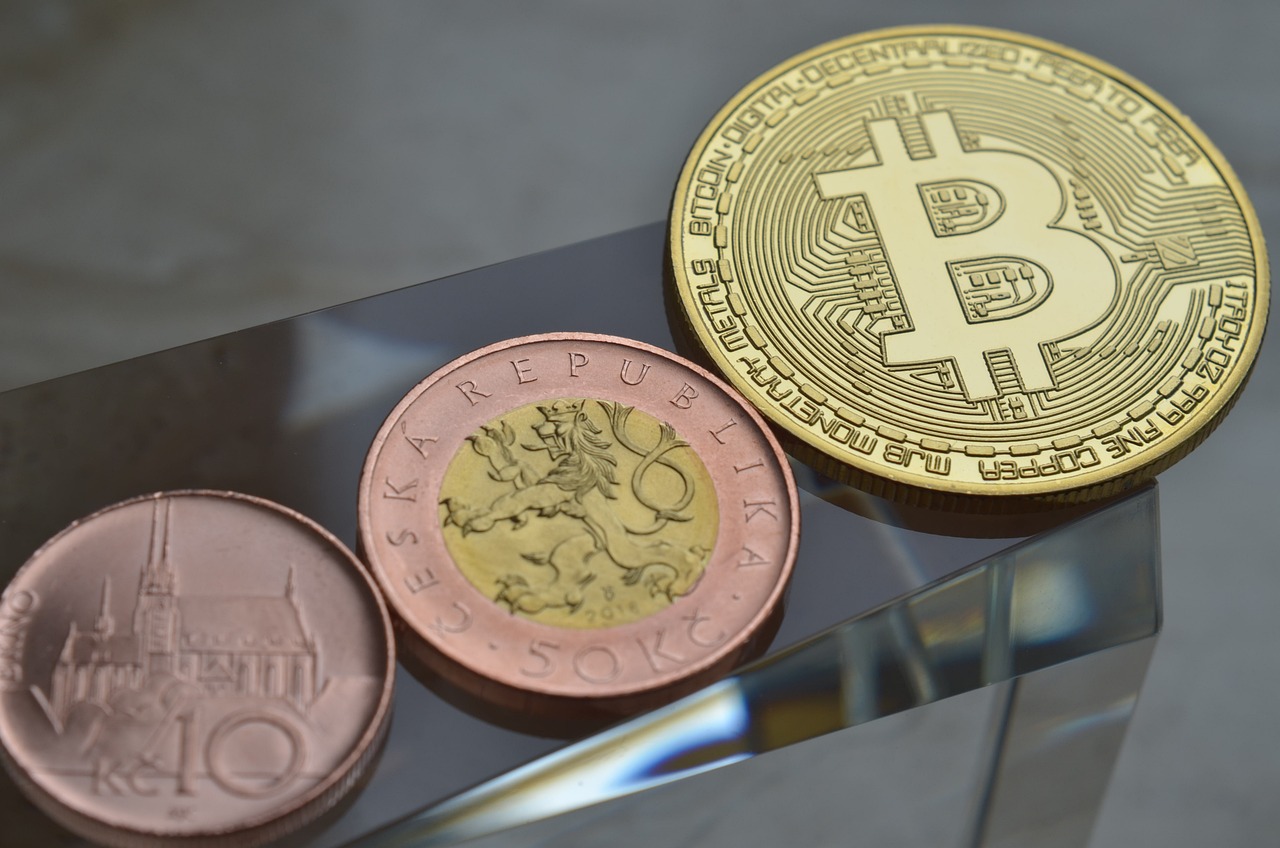
[News and Events Timing]
In the fast-paced world of cryptocurrency trading, timing is everything. Just like a chef must know when to add spices to create the perfect dish, traders need to be aware of how news and events can impact the market. Major news events can send prices soaring or crashing within minutes, making it crucial for traders to stay informed and ready to act. So, how can you effectively time your trades around these pivotal moments?
First, it's essential to understand the types of news that can affect cryptocurrency prices. Economic reports, regulatory announcements, technological advancements, and even social media trends can create ripples in the market. For instance, when a major country announces regulations that favor cryptocurrency, traders often rush to buy, driving prices up. Conversely, negative news can lead to panic selling. Therefore, staying updated on news sources and financial reports is vital for any trader looking to make informed decisions.
To maximize your trading efficiency, consider creating a news calendar. This calendar should highlight significant events that could impact the market. For example, you might include:
- Economic indicators such as GDP releases, unemployment rates, and inflation reports.
- Major regulatory announcements from influential countries.
- Technological updates or forks in popular cryptocurrencies.
- High-profile endorsements or criticisms from notable figures.
Another effective strategy is to watch for market sentiment leading up to significant events. Social media platforms and cryptocurrency forums can provide insights into how traders feel about upcoming news. For instance, if a major exchange is rumored to list a new cryptocurrency, you might see increased chatter and speculation. This buzz can often lead to price increases before the official announcement. However, be cautious—sometimes the hype can lead to a sell-off after the news is released, so it’s crucial to monitor the market closely.
Additionally, understanding the timing of announcements is key. Some traders prefer to enter positions just before a major announcement, while others may wait until after the news is released to gauge the market reaction. This approach can be likened to playing a game of chess; you need to anticipate your opponent's moves and think several steps ahead. Consider the following:
| Timing Strategy | Advantages | Disadvantages |
|---|---|---|
| Pre-Announcement | Potential for quick gains if news is positive | Risk of losing if the news is negative |
| Post-Announcement | Ability to assess market reaction | May miss out on initial price surge |
In summary, timing your trades around news and events is a powerful strategy that can significantly enhance your trading success. By keeping an eye on relevant news, creating a news calendar, and understanding market sentiment, you can make more informed decisions. Remember, in the world of cryptocurrency, knowledge is not just power; it's profit.
Q1: How can I stay updated on cryptocurrency news?
A1: You can follow reliable news websites, subscribe to financial newsletters, and participate in cryptocurrency forums and social media groups.
Q2: What types of news should I pay attention to?
A2: Focus on economic indicators, regulatory news, technological advancements, and significant endorsements or criticisms from influential figures.
Q3: Is it better to trade before or after major news events?
A3: It depends on your risk tolerance. Pre-announcement trading can yield quick profits, but it also carries higher risks. Post-announcement trading allows you to assess market reactions but may result in missed opportunities.

[Economic Indicators]
When it comes to trading cryptocurrency, understanding economic indicators is like having a compass in a dense forest; it guides you through the chaos and helps you make informed decisions. Economic indicators are statistical data points that provide insights into the economic performance of a country or region, and they can significantly influence market sentiment. For cryptocurrency traders, keeping an eye on these indicators can mean the difference between riding the waves of profit and getting swept away by unexpected losses.
Some of the most critical economic indicators that traders should monitor include:
- Gross Domestic Product (GDP): A rising GDP often signals a healthy economy, which can lead to increased investment in cryptocurrencies as people feel more confident in their financial situations.
- Unemployment Rates: High unemployment can lead to decreased consumer spending, which might negatively impact crypto demand. Conversely, low unemployment rates can boost market confidence.
- Inflation Rates: Inflation can erode purchasing power, pushing investors towards cryptocurrencies as a hedge against inflation.
- Interest Rates: Central banks' decisions on interest rates can impact liquidity in the market. Lower rates may encourage borrowing and investing, potentially boosting crypto prices.
These indicators are often released at scheduled intervals, and savvy traders will prepare their strategies around these announcements. For example, if a country is about to release its GDP growth rate, traders may anticipate volatility in the market. This anticipation can lead to increased trading volume as traders position themselves ahead of the news. It's essential to understand that the impact of these indicators can vary depending on the overall market sentiment at the time of the announcement.
Moreover, the timing of these economic releases is crucial. Most economic indicators are published at specific times, and traders should be aware of these schedules to capitalize on potential price movements. For instance, if a major economic report is due to be released in the morning, the hours leading up to that report can be a prime time for trading. This is when traders are most likely to react to rumors or expectations surrounding the upcoming data.
In conclusion, staying informed about economic indicators is vital for any cryptocurrency trader. By understanding how these indicators influence market sentiment and timing your trades accordingly, you can enhance your chances of making profitable trades. Remember, knowledge is power, and in the fast-paced world of cryptocurrency, being one step ahead can make all the difference.
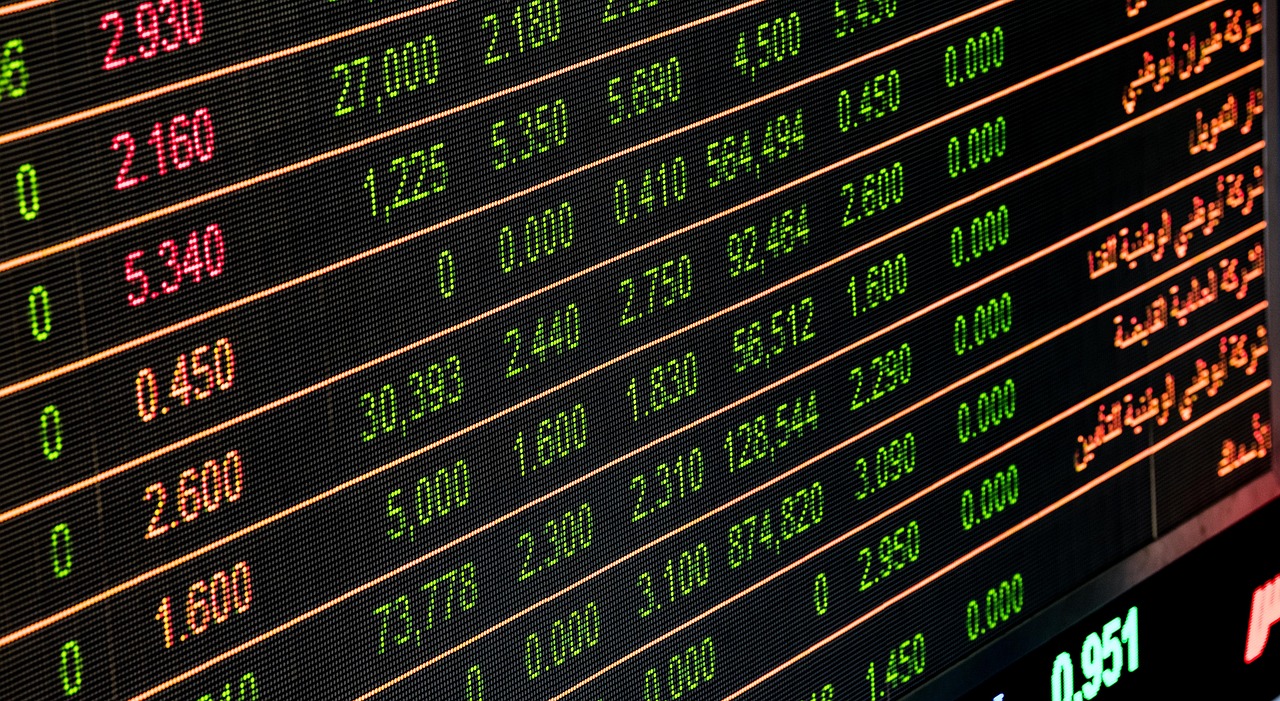
[Regulatory News]
When it comes to trading cryptocurrency, staying informed about regulatory news is crucial. Why, you ask? Well, regulations can create significant price fluctuations, impacting your trading strategy more than you might think. For instance, when a country announces new regulations regarding cryptocurrency trading, it can lead to either a surge or a plummet in prices, depending on whether the news is perceived as positive or negative. This is why being proactive and aware of the regulatory landscape can be your secret weapon in maximizing profits.
One of the most effective ways to navigate the regulatory waters is by keeping an eye on key announcements from government bodies and financial institutions. These announcements can include anything from new taxation policies to outright bans on cryptocurrency trading. Understanding the implications of these regulations can help you make informed decisions about when to enter or exit a trade.
Moreover, many traders often overlook the timing of these regulations. For example, if a major country is set to announce new crypto regulations, the days leading up to the announcement can be filled with speculation and volatility. This is where the concept of timing comes into play. Traders who can predict the market's reaction to regulatory news may find themselves in a favorable position. Here’s a simple table to illustrate how different types of regulatory news can impact trading sentiment:
| Type of News | Potential Impact |
|---|---|
| New Tax Regulations | Possible decrease in trading volume as traders reassess their strategies. |
| Legalization of Cryptocurrency | Potential surge in prices as market confidence increases. |
| Government Bans | Sharp decline in prices due to panic selling. |
| Regulatory Clarity | Stabilization of prices as traders gain confidence. |
In addition to monitoring news from regulatory bodies, it's also important to follow financial analysts and industry experts. They often provide insights into how upcoming regulations could affect the market. By combining their analysis with your own research, you can develop a more comprehensive view of the potential impacts on your trades.
Lastly, don’t forget about the global nature of cryptocurrency. Regulations can vary greatly from one country to another, and these differences can create opportunities for savvy traders. For instance, if a country tightens its regulations, traders may flock to markets with looser regulations, leading to price changes that you can capitalize on. Always keep your finger on the pulse of global regulatory trends to stay ahead of the game.
- How do regulations affect cryptocurrency prices?
Regulations can lead to increased volatility, with positive news often driving prices up and negative news causing declines. - What should I do if a regulatory announcement is made?
Stay calm, assess the news, and consider how it aligns with your trading strategy before making any decisions. - Where can I find reliable regulatory news?
Follow reputable financial news outlets, government websites, and industry experts to stay informed.

[Seasonal Trends]
When it comes to trading cryptocurrency, understanding seasonal trends can be a game-changer. Just like the seasons of the year influence various aspects of our lives, they also play a significant role in the cryptocurrency market. For instance, certain times of the year may see increased trading activity, while others may experience a lull. This can be attributed to various factors, including market sentiment, investor behavior, and even the timing of major events.
Historically, the cryptocurrency market has shown distinct patterns throughout the year. For example, many traders observe that the first quarter often brings a surge in prices, as new investors enter the market, driven by optimism and the potential for high returns. Conversely, the summer months might see a decrease in trading volume, as many investors take vacations and the market becomes quieter. Understanding these patterns can help traders make more informed decisions about when to buy or sell.
Moreover, the holiday season can also impact trading behavior. During this time, many people are focused on spending and may not be as engaged with their investments. As a result, trading volumes might drop, leading to less volatility in the market. However, this can also present opportunities for savvy traders who recognize that they might be able to buy at a lower price during these quieter times.
To illustrate the impact of seasonal trends, let's take a look at a table that highlights some key observations from previous years:
| Season | Typical Market Behavior | Investor Sentiment |
|---|---|---|
| Q1 (January - March) | Increased trading volume and price surges | Optimistic, new investors entering |
| Q2 (April - June) | Volatility, mixed trends | Speculative, cautious optimism |
| Summer (July - September) | Decreased trading volume | Indifferent, vacation mode |
| Q4 (October - December) | Market rallies, year-end trading | Hopeful, preparing for the new year |
In addition to these seasonal trends, it's essential to keep an eye on economic events and market news that can disrupt these patterns. For example, if a major regulatory announcement is made during a typically quiet season, it could lead to unexpected volatility. Therefore, staying informed about both seasonal trends and current events is crucial for any trader looking to maximize their profits.
In conclusion, recognizing and adapting to seasonal trends can significantly enhance your trading strategy. By understanding when the market is likely to be more active or subdued, you can make more informed decisions about when to enter or exit trades. Remember, the cryptocurrency market is constantly evolving, and being aware of these seasonal patterns can help you stay one step ahead of the competition.
- What are seasonal trends in cryptocurrency trading? Seasonal trends refer to recurring patterns in trading activity and price movements that occur at specific times of the year.
- How can I identify seasonal trends? Analyzing historical price data and trading volumes can help you identify patterns and trends over different seasons.
- Do seasonal trends guarantee profits? While they can provide insights, there are no guarantees in trading. It's essential to combine seasonal analysis with other strategies.
- What other factors should I consider besides seasonal trends? Keep an eye on market news, economic indicators, and regulatory developments, as these can also impact trading behavior.
Frequently Asked Questions
- What are the best times to trade cryptocurrency?
The best times to trade cryptocurrency typically align with peak trading hours, which are often when major global markets overlap. For instance, the overlap between the Asian and European markets can lead to increased trading volume and volatility, creating more opportunities for profit. Additionally, being aware of specific market trends can help you decide when to enter or exit trades effectively.
- How do market trends affect trading strategies?
Understanding market trends is crucial for developing effective trading strategies. Bullish trends indicate rising prices, suggesting it might be a good time to buy, while bearish trends indicate falling prices, which could signal a good time to sell. By analyzing these trends, traders can better position themselves to maximize their profits and minimize losses.
- What role do news and events play in cryptocurrency trading?
News and events can significantly impact cryptocurrency prices. Major announcements, such as regulatory changes or technological advancements, often lead to price fluctuations. Traders should stay informed about upcoming news and events to strategically time their trades, potentially capitalizing on market reactions.
- Is weekend trading different from weekday trading?
Yes, weekend trading can differ from weekday trading. During weekends, trading volumes may decrease, leading to less liquidity and potentially higher volatility. While some traders prefer the quieter weekends to make strategic moves, others might find the lower volume means less predictable price movements.
- What are seasonal trends in cryptocurrency trading?
Seasonal trends refer to patterns that can be observed at specific times of the year, often influenced by various factors such as market sentiment, economic conditions, and historical performance. By analyzing these trends, traders can make more informed decisions about when to buy or sell throughout the year.
- How can I stay informed about regulatory news?
Staying informed about regulatory news is crucial for traders. Subscribing to reputable financial news outlets, following industry experts on social media, and participating in cryptocurrency forums can help you keep up with the latest developments. Being proactive about gathering this information can help you anticipate market movements related to regulatory changes.
- What economic indicators should I monitor?
Key economic indicators to monitor include inflation rates, employment data, and interest rates. These indicators often influence market sentiment and can provide insights into potential price movements in the cryptocurrency market. Keeping an eye on these metrics can help you time your trades more effectively.



